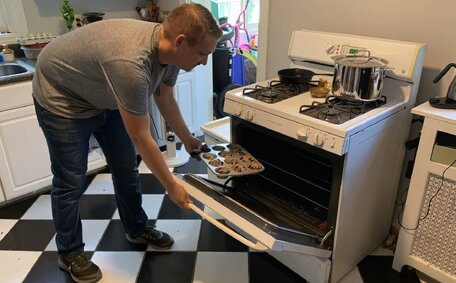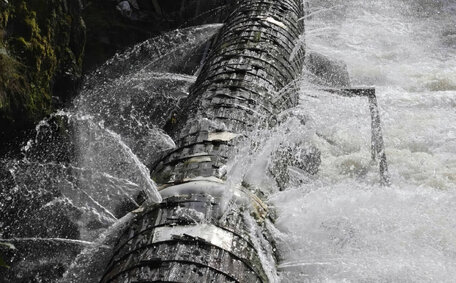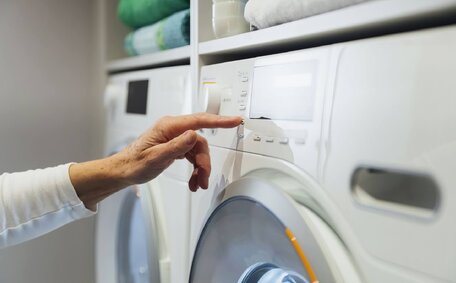Check the Temperature Settings
Having your water heater set to the proper temperature is crucial for safety, efficiency, and comfort. Water that is too hot can cause scalding and waste energy, while water that is too cool may lead to health risks and poor performance.
Start by locating the thermostat on your water heater. It is usually near the bottom on an electric model or behind a control panel on a gas heater. Refer to the manufacturer’s guide if you cannot find it.
Turn on a hot water tap and let it run for a minute so the temperature stabilises. Then use a cooking thermometer to test the temperature. Place the thermometer under the running water without touching the sides of the sink.
The ideal hot water temperature from the tap is 120-140°F (49-60°C). If it is outside of this range, adjust the thermostat on your water heater and retest until you achieve the proper temperature.
Be sure to consult the user manual before making any major adjustments, as each unit may have slightly different procedures. Maintaining the right hot water temperature will keep your water heater performing efficiently for years to come.
Inspect the Thermostat
The thermostat controls the temperature of the water in your water heater. To inspect it, first turn off power to the unit at the circuit breaker. Electric water heaters will have a double pole breaker while gas heaters have a single pole.
Remove the access panel on your water heater to expose the thermostat. Be very careful working around the electrical connections and heating elements. Refer to the manual if you’re unsure of any steps.
Visually inspect the thermostat for any signs of damage like cracks or corrosion. Use a multimeter to check if it is providing the proper electrical resistance based on the temperature setting. Thermostats are relatively inexpensive, so replace it if any issues are found.
Also inspect the thermostat insulation and sensory bulb. Damage here can affect temperature regulation. Replace any faulty parts.
Make sure the bulb is fully immersed in the tank water.
Reinstall the access panel and restore power once complete. Test to confirm the water heater is heating to the thermostat’s set temperature. Contact a technician if temperature regulation problems persist after replacing the thermostat.
Adjust the Temperature
Properly adjusting your water heater’s temperature settings is crucial for safety and efficiency. Water that is too hot (above 140°F) can cause scalding injuries. Water that is too cool (below 120°F) may allow bacteria growth.
Start by locating the temperature dial or buttons on your unit. Gently turn or press to lower or raise the temperature setting incrementally. Gently turn or press to lower or raise the temperature setting incrementally.
Refer to the user manual if unsure.
Test the hot water temperature at a tap using a thermometer to verify the new setting. Make small additional adjustments as needed. Take care not to overshoot your target range.
Aim for a hot water temperature of around 120-140°F. This provides comfortably hot water while minimising energy waste and safety risks. Maintaining the ideal temperature range will keep your hot water system operating efficiently.
Test the Heating Elements
Testing the heating elements is crucial to diagnosing water heater problems and determining if they need replacement. Begin by turning off power to the unit at the circuit breaker and removing the access panel.
Locate the upper and lower heating elements. They should be partially submerged in the water tank. Locate the upper and lower heating elements.
Inspect for signs of damage like pitting or scorch marks. Refer to the manual but elements normally test around 5-25 ohms.
If the readings are way off or infinite, it indicates a broken element that must be replaced. While the access panel is off, also check the insulation panels between the tank and elements.
Replace any that are cracked or damaged to prevent energy loss. Reinstall the access panel and restore power once done testing. Faulty elements that don’t heat properly will affect your hot water supply.
Check for Continuity
Checking for continuity in the heating elements of your water heater is an important maintenance task. Continuity refers to an unbroken electrical pathway in the heating element circuit.
Over time, the heating elements can develop cracks or breaks in their metal sheathing from mineral buildup, corrosion, overheating, and other wear. This causes them to lose continuity.
You can check for continuity using a multimeter set to ohms reading. You can check for continuity using a multimeter set to ohms reading.
A normal reading is around 5-25 ohms. A high or infinite reading indicates a break in continuity.
Lost continuity prevents electric current from properly flowing through the entire heating element. This results in cold spots and uneven heating, reducing efficiency. In severe cases it can lead to element failure.
Replacing any heating elements that have lost continuity will restore your water heater’s ability to heat water properly. Regularly checking for continuity allows you to catch problems before they worsen.
Test for Short Circuits
It’s crucial to test the heating elements in your water heater for short circuits. A short circuit is when the electric current flows along an unintended path with very low or no resistance.
This can happen if the heating element wiring insulation becomes damaged, allowing the positive and negative wires to touch. It can also occur if mineral deposits build up inside the element, bridging the gaps in the wiring.
To check for shorts, turn off power to the water heater and use a multimeter set to ohms reading.
Touch the probes to the element terminal screws. A normal reading is 5-25 ohms. Touch the probes to the element terminal screws.
Short circuits cause rapid, excessive flow of electricity that can burn out the heating element. This results in a loss of hot water production. Catching and replacing shorted elements early prevents complete failure.
Testing for shorts along with continuity allows you to identify and fix heating element issues before they can damage your water heater or leave you without hot water.
Replace Faulty Elements
Replacing faulty heating elements is crucial for restoring hot water production in an electric water heater. Start by turning off power to the unit at the circuit breaker and draining the tank.
Remove the access panel and disconnect the wiring from the bad element. Use a socket wrench to unscrew the element from the tank. Apply thread sealant to the replacement and screw it in tightly.
Reconnect the wiring, being sure to match hot and neutral sides. Turn power back on and test that the new element heats up properly.
Refill the tank and check for leaks. Replace both elements for even wear.
Having fully functional heating elements that provide consistent, even heat will extend the life of your electric water heater. Take care to make watertight electrical connections.
Reset the Circuit Breaker
Tripping the circuit breaker is a common reason for a water heater to stop heating. The breaker trips as a safety measure to stop power flow during an overload or short circuit.
Locate the circuit breaker controlling your water heater. It will likely be a double pole 240V breaker for an electric heater, or a single pole 120V breaker for a gas heater. Check if the lever has tripped to the OFF position.
Reset the breaker by switching it fully to OFF, then back ON. If it trips again instantly, there is still an underlying electrical issue that needs correction by an electrician.
If resetting the breaker restores operation, the original cause may have been temporary. But frequent tripping indicates the breaker may need replacing or the heater wiring should be checked.
Try resetting the circuit breaker first whenever your water heater stops heating. Just take care not to reset breakers repeatedly without addressing the root cause.
Clear Sediment Buildup
Over time, sediment buildup from rust, minerals and corrosion debris can accumulate at the bottom of your water heater tank. This buildup insulates the water from the heating source, reducing efficiency.
To clear sediment, first turn off power to the water heater and shut off the cold water supply line. Attach a garden hose to the tank drain valve and route it to a safe drainage area. Open the drain and allow all the water to fully empty out.
Once drained, close the valve and refill the tank by opening the cold water supply. While it fills, open the drain again to flush out any loose sediment. You may need to repeat draining and refilling 2-3 times to thoroughly clear all buildup.
Annual flushing helps maximise your water heater’s life and performance. If sediment has hardened and cannot be flushed out, replacement may be needed. Prevent future buildup by installing water filtration.
Replace the Anode Rod
The anode rod is a crucial component in your hot water system. This metal rod sacrifices itself through corrosion to prevent the inner tank from rusting. Over time, the anode rod wears away and must be replaced.
Locate the anode rod on top of the water heater. Use a socket wrench to unscrew the anode rod.
It looks like a bolt head in the centre of the tank. Turn off the power and water supply, then open the pressure relief valve. It looks like a bolt head in the centre of the tank.
Replacing the anode rod every 3-5 years extends your hot water system’s lifespan. It is an essential maintenance task that prevents premature failure. Check the anode rod annually and replace it once it is around 60% worn away.
Check for Leaks
Checking your water heater for leaks is an essential maintenance task. Even small leaks can cause major problems if left unaddressed.
Start by visually inspecting around the base of the tank. Look for any water on the floor or signs of moisture on nearby walls or piping. Running your hand along the tank may help you detect damp spots.
Also inspect pipe connections, pressure relief valves, and other fittings for drips or moisture. Trace any water streaks back to their source.
If you find a leak, try tightening fittings or valves first. Turn off the water supply and drain the tank if needed. Have a professional repair the leak if tightening does not fix it.
For electric water heaters, also check that terminal covers are intact and wiring has no exposed copper. Insulation damage can lead to electrical shorts and leaks.
Catching leaks early prevents water damage and rust corrosion. Monitor your water heater periodically for any new leaks or moisture. Swift repairs will extend the life of your hot water system.






